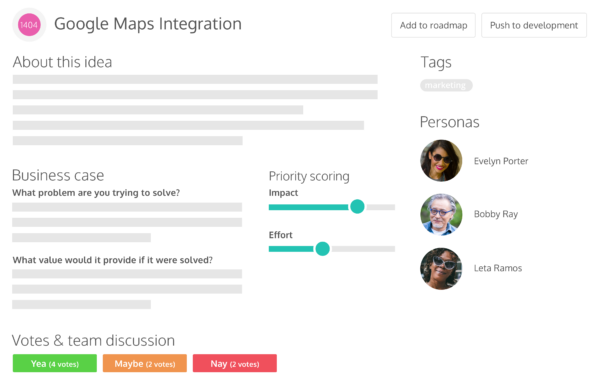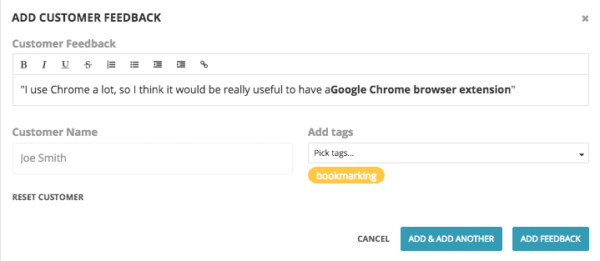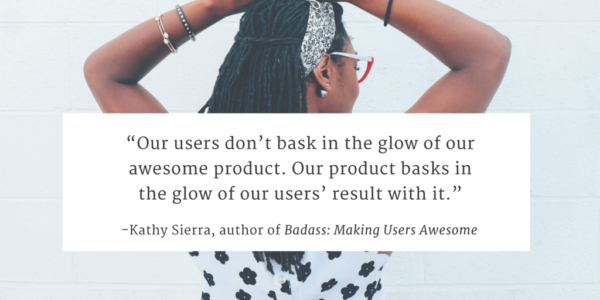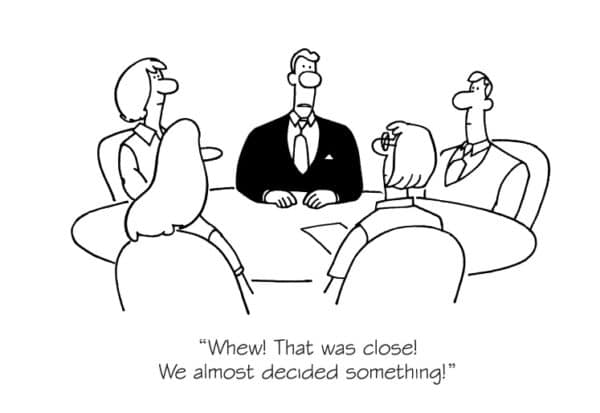Product Teams: What Highly Effective Ones Are Doing Differently
Someone asked me recently: “What makes an effective product team?”
Good question 🙂
ProdPad has been a product-focused team from the start – after all, ProdPad is a product for Product Managers to do their product management… built by Product Managers.
It’s so very meta. Rick and Morty would be proud.
But as our team grows, it’s helpful to look back at what’s helping us stay product-oriented so we can double down on what’s working for us.
Here are my observations:
1. An effective product team makes product discussions accessible to everyone else at the company
One day, a deeply annoyed Elon Musk sent all of SpaceX a memo titled “Acronyms Suck.” It was an executive order to stop using acronyms in the workplace because it was hindering basic communication among employees.
“Excessive use of made up acronyms is a significant impediment to communication and keeping communication good as we grow is incredibly important.
Individually, a few acronyms here and there may not seem so bad, but if a thousand people are making these up, over time the result will be a huge glossary that we have to issue to new employees. No one can actually remember all these acronyms and people don’t want to seem dumb in a meeting, so they just sit there in ignorance.”
He was right. When you start to speak in your own language, in team speak, others can’t meaningfully participate in the conversation.
The product mindset requires everyone at the company to be able to discuss the product in terms everyone can understand.
A truly effective product team communicates with sales, support, marketing, development, QA, and so on, in a way that is meaningful to each of those teams.
We do two things to keep our product conversation open to everyone on the team:
- We give everyone access to our product backlog. Everyone can drop in ideas, suggestions, and comment on existing ideas. (We review and respond on an ongoing basis.)
- We don’t accept ideas without a short 1-2 sentence business case, a high-level argument for moving that idea forward. This filters out frivolous ideas.

This process forces everyone to think about their suggestions in terms of business value rather than personal preferences:
- What problem are we trying to solve?
- What value would it provide if it were solved?
Essentially, if you want something done to the product, you have to defend it in terms everyone understands. If you’re suggesting something that doesn’t move the needle, then is it worth suggesting? Is it worth taking up several people’s time to work on?
These kinds of questions are now baked into our company culture.
2. Effective product teams use high-level product and business goals to drive their team-level work
Call them what you want – OKRs, KPIs, objectives – but effective product teams assign high-level product goals that everyone else can contribute to.
Any of these are tangible enough to work:
- Increase trial-to-paid conversions by 15%
- Reduce new user churn by 3%
- Increase trials to 500 per month
When we decided to increase our trial-to-paid conversions, each of us took off to complete our own set of tasks.
Our CPO went into our analytics to dig up user behavior during the trial period.
That told us which actions our most successful users were taking before they became paid customers.
Our Head of Growth designed an email drip that would convince new customers to take those actions right away.
Our Head of Customer Success created a set of masterclass videos to visually teach new users how to take those first actions.
Meanwhile, we got together as a team to redesign our entire onboarding experience.
The actual nature of the objectives will differ per product team, as they are usually tied to the product itself. (For SaaS metrics, get this cheat sheet from Chartmogul.)
But the principle remains the same – if you want to keep everyone aligned around your product, set goals that are tightly wrapped around your product.
3. Effective teams give company-wide access to customer feedback and support tickets
Slack gets all my love for this one.
We’ve set up a Slack channel to send us incoming Zendesk tickets so that all of us are in on them.
In companies where customer support is considered a separate function, everyone else misses out on the stream of raw customer feedback, comments, and questions.
As far as I’m concerned, this is as good as gold.
Our Head of Customer Success also ropes all of us into doing customer support when she needs us. Rather than pinging us separately, asking how to answer, and answering the ticket herself), she assigns us the tickets that we’re better positioned to answer.
We also use our own Slack-ProdPad integration to send all our customer feedback into our backlog. Rather than make an informal comment over lunch like “X customer just told me she hates our new phased rollout,” we collect them in ProdPad.

Here, they become a formal part of our product process. So long as we put our notes back into ProdPad, they will be seen, and tagged, and they will be considered when the time comes to address that issue.
The alternative is that the customer feedback we field while we’re on the road meeting customers, at conferences, and so on just disappears into thin air.
4. Effective teams invest in making users feel badass
People use products that make them feel badass, and they invest time and energy in products that make them feel badass.
That’s developer evangelist Kathy Sierra’s message to product teams and companies: make your users feel awesome, badass, and good at what they do.

Sometimes, this means thinking beyond the product itself.
We take our cues from companies like Unbounce, a company whose marketing strategy is to create and give away the most useful digital marketing knowledge possible. Their resources are so well produced, thorough, and genuinely useful that they hardly qualify as marketing in the traditional sense.
I see it as effectively a companion product to its landing page tool – a growing library of webinars, courses, e-books, and posts that help users become really confident marketers.

This collaboration of marketing and product, which don’t always cooperate as they should, is a clear victory for the company.
Where are customers struggling? What do they want to learn more about? What would make them more confident at work or in life?
There’s your sweet spot.
Similarly, our own marketing revolves around helping our users become better product managers.
For example, when we saw one of our blogs, How to Build a Product Roadmap Everyone Understands, start to attract significant traffic, we doubled down the topic. Now, our free, in-depth e-course on the same topic has become the go-to resource for building a simple and agile product roadmap.
Is it marketing? Is it customer success? Based on my experience, just say no to labels and do whatever makes your users feel smart and ready to take on the world.
5. Effective product teams put the final decision and/or veto power in the hands of a single product manager.
Sure, there are risks to giving one person the power to decide what stays or goes but the alternative is death by committee – and it’s hard to recover from a culture like that.

Product decisions made by committee result in compromise, and compromise is how Windows 8 happened.
Leave the back-and-forth shuffling and the mealy-mouthed product decisions to a less imaginative product company. It takes a single bold product leader who has the power to insist to catapult products into first place. There is one caveat: before making that final call, Product Managers should ask their colleagues what they think.
One of our customers Ajay Dawar, VP of Product Management & Design at Everstring, does this in a really interesting way.
First, he talks to the CEO and exec team about what they believe the product direction should be. Then, he poses the following question to each team leader:
“Over the next 90 days, what’s the most important thing for us to do?”
Based on those discussions, he curates a set of ideas from an otherwise long product backlog for them to stack rank. Stank ranking effectively forces his colleagues to assign their priorities a numbered list – no ties allowed.
A committee might be tempted to say: “Can we squeeze in both?” But he has the full support of the company to make the final decision.
Speaking of final decisions, the other caveat is this: No decision has to be final. Any good product team is always testing, learning, and iterating based on the results.
Every product decision should be subject to change.

2 thoughts on "Product Teams: What Highly Effective Ones Are Doing Differently"
Comments are closed.